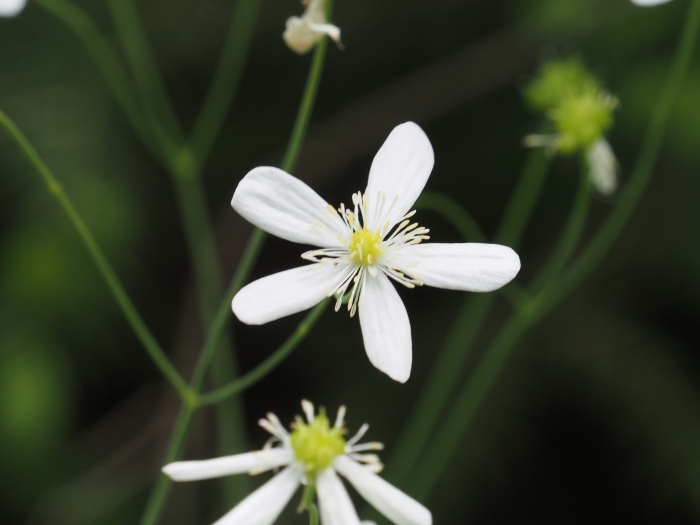Aconite-Leaf Buttercup
(Ranunculus aconitifolius)
Aconite-Leaf Buttercup (Ranunculus aconitifolius)
/
/

© Michael Knapp
CC BY 4.0
Image By:
© Michael Knapp
Recorded By:
Copyright:
CC BY 4.0
Copyright Notice:
Photo by: © Michael Knapp | License Type: CC BY 4.0 | License URL: http://creativecommons.org/licenses/by/4.0/ | Uploader: waldgeist | Publisher: iNaturalist |



















































Estimated Native Range
Summary
Ranunculus aconitifolius, commonly known as aconite-leaf buttercup or bachelor’s buttons, is a herbaceous perennial native to moist meadows and stream banks in Europe, from Spain to the Balkans. It typically grows to 60 cm (24 in) high by 40 cm (16 in) broad. The plant features slightly hairy palmate leaves up to 20 cm (8 in) long, and in spring, it produces loose panicles of white, saucer-shaped flowers that are quite showy and attract pollinators. The double-flowered cultivar R. aconitifolius ’Flore Pleno’, also known as fair maids of France or fair maids of Kent, has been recognized with the Royal Horticultural Society’s Award of Garden Merit for its ornamental value.
The aconite-leaf buttercup thrives in a garden setting where it can receive full sun to part shade. It prefers consistently moist soil with medium drainage, making it suitable for planting near water features or in damp garden spots. It is often used in cottage gardens, borders, and wildflower meadows for its charming flowers and foliage. While it requires regular watering, it is relatively low maintenance and can naturalize in suitable conditions. Gardeners should be aware that all parts of the plant are toxic if ingested, and it can cause skin irritation on contact.CC BY-SA 4.0
The aconite-leaf buttercup thrives in a garden setting where it can receive full sun to part shade. It prefers consistently moist soil with medium drainage, making it suitable for planting near water features or in damp garden spots. It is often used in cottage gardens, borders, and wildflower meadows for its charming flowers and foliage. While it requires regular watering, it is relatively low maintenance and can naturalize in suitable conditions. Gardeners should be aware that all parts of the plant are toxic if ingested, and it can cause skin irritation on contact.CC BY-SA 4.0
Plant Description
- Plant Type: Herb
- Height: 1-2 feet
- Width: 0.6-1.2 feet
- Growth Rate: Moderate
- Flower Color: White
- Flowering Season: Spring
- Leaf Retention: Deciduous
Growth Requirements
- Sun: Full Sun, Part Shade
- Water: Medium, High
- Drainage: Medium
Common Uses
Bee Garden, Bird Garden, Butterfly Garden, Deer Resistant, Low Maintenance
Natural Habitat
Moist meadows and stream banks in Europe
Other Names
Common Names: Bachelor’s Buttons, Stormhattsranunkel, Eisenhutblättriger Hahnenfuß
Scientific Names: , Ranunculus aconitifolius, Ranunculus aconitifolius subsp. aconitifolius, Ranunculus aconitifolius var. humilis, Ranunculus aconitifolius var. intermedius, Ranunculus caballeroi, Ranunculus aconitifolius var. crassicaulis, Ranunculus nyssanus, Ranunculus heterophyllus, Ranunculus argenteus
GBIF Accepted Name: Ranunculus aconitifolius L.